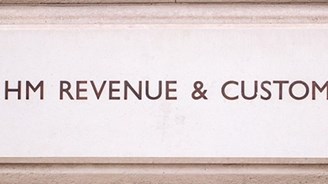Dr No!

HMRC have been targeting the travel costs of NHS consultants doing private work for many years. However, in what may well be seen as a test case and after an enquiry lasting more than seven years and three Tribunal hearings, the First tier Tribunal has disallowed the travelling expenses of an NHS consultant doing private work (TC02533: Samad Samadian January 2013 First tier Tribunal).
The facts
The taxpayer specialises in the health care of elderly people and works full time for the Epsom and St Helier NHS Trust, as an employee, at two hospitals in south London and has a permanent NHS office, including a secretary.
The taxpayer holds weekly out-patient sessions at two private hospitals, St Anthony's in Cheam and Parkside in Wimbledon, and his NHS secretary acts as his secretary in his private practice in her spare time.
Typically, referral letters are sent to the taxpayer's office at his home in Sutton, directly or via his NHS office. Headed paper shows his home as the correspondence address, as well as paperwork sent to him by health insurance companies. Telephone calls are made to his home/office, mobile, private secretary or NHS office, while emails are usually sent to his professional email address which he accesses at home.
After receiving a referral, the taxpayer embarks on a fact-finding consultation at one of the sessions at St Anthony's or Parkside, at the patient's home or at an alternative care location. Out-patient consulting rooms are hired for three hours, with other doctors using the rooms on a similarly restricted basis for the rest of the time. At the end of each session, the temporary doctor's name plate is changed on the door. Any test results or other correspondence at either of the private hospitals is placed in a shared pigeon hole. The taxpayer prepares a treatment plan in his home/office and continues to monitor and care for the patient. He reviews patients' conditions during his ward rounds, six evenings a week, at St Anthony's.
The taxpayer's home office contains a desk, chair, medical library, computer, filing cabinet, prescription pads, basic medical equipment, patient clinical records and his own business records. The taxpayer does not examine patients at home.
In the absence of a mileage log, the taxpayer was asked to supply a schedule of his typical weekly journeys to support the 65% business mileage/capital allowance claims. The two regular journeys which had been claimed for became the main source of disagreement:
- mileage between the NHS hospitals and the private hospitals; and
- mileage from home to the private hospitals.
HMRC disputed the validity of both journeys and proposed an alternative business percentage of 6%. Assessments were made to 2003/04-2006/07 and the taxpayer appealed.
The arguments
During the case six cases were referred to - Newsom v Robertson 33 TC 452, Horton v Young 47 TC 60, Sargent v Barnes (1978) STC 322, Powell v Jackman (2004) STC 645, Manders v HMRC (2010) UKFTT 313(TC) and Mellor v HMRC (2011) UKFTT 29(TC) - all related to the travel costs of the self-employed. However, the Tribunal also considered Mallalieu v Drummond.
The taxpayer argued that the business base should be regarded as the place from which a business is run (i.e. home) and not, as HMRC argued, the place where the professional services, or part of them, are carried out.
HMRC argued that the cost of travelling to and from home and a place of work is generally not allowable because the journeys cannot be regarded as wholly and exclusively for business. The motive, object and purpose of the taxpayer's journeys between his home and the private hospitals were to take him to and from home, so the travel could never be wholly and exclusively for the purposes of his profession.
The reasoning
The Tribunal distinguished this case from Horton (a jobbing bricklayer who went to seven different sites in the year):
'Unlike Mr Horton, he has had a pattern of regular and predictable attendance at specific locations other than his home in order to perform significant professional functions as a clinician...his attendance at both locations has involved significant performance of professional functions of his clinical work (consulting with and treating patients) and has followed a pattern which, although it has changed from time to time, has been generally fixed and predictable. It is this pattern of regular and predictable attendance to carry out significant professional functions as more than just a visitor which, in our view, constitutes both Parkside and Saint Antony's as 'places of business' from which he has been carrying on his profession throughout and accordingly negates any suggestion that his profession is "itinerant" (or entirely "home based") within the ratio of Horton as properly understood.'
The Tribunal placed also emphasis on the comments made in Mallalieu v Drummond, when the judge sought to explain the statutory words '...expended for the purposes of the trade...'. In that case, a claim for professional clothing for use in court as a barrister failed:
'...because although she (Ms Mallalieu) had no conscious motive for incurring the expenditure which was not a business motive, the facts were such that there must necessarily have been a non-business motive in her mind as well'.
That case had been:
'...important and helpful in clarifying the distinction between 'object' or 'motive' on the one hand and 'effect' on the other, and in making clear that a court may look behind the conscious motive of a taxpayer where the facts are such that an unconscious object should also be inferred.'
Although the taxpayer did have a place of business at home, the Tribunal stated that there must have been a mixed object in the travelling between home and the private hospitals because part of the object of the journeys must be to maintain a home in a separate location from St Anthony's and Parkside:
'The fact remains that the statutory test, when interpreted in line with Mallalieu, sets a very high bar for deductibility of travel involving a taxpayer's home. The only reported case of the higher courts in which this bar has been cleared is Horton, and we consider the present case falls short of Horton...
We find that the Appellant must have a mixed object in his general pattern of travelling between his home and his places of business at Parkside/St Antony's. Part of his object in making those journeys must, inescapably in our view, be in order to maintain a private place of residence which is geographically separate from the two hospitals. It follows that even though we find he has a place of business also at his home, his travel between his home and those two locations cannot be deductible, on the basis of the reasoning in Mallalieu.'
The journeys between the NHS hospitals and the private hospitals were also regarded as non-deductible on the grounds that:
'...the object of the travel is to put the appellant into a position where he can carry on his business away from his place of employment; the travel is not an integral part of the business itself'.
The decision
Consequently:
- the taxpayer had places of business at Parkside, St Antony's and his home;
- as the taxpayer had other places of business apart from his home, his travel between home and those other places of business fell outside Horton;
- although the taxpayer's travel between his home and Parkside/St Antony's was between places of business, on general principles no deduction can be allowed in relation to that travel;
- the taxpayer's travel between his places of employment with the NHS and Parkside/St Antony's on the other was undertaken to get him to and from his place of business and not in the course of carrying on his business.
It remains to be seen whether the taxpayer appeals and it is important to bear in mind this case is not binding. Every case is different but 'How different?' is the question facing many consultants.



